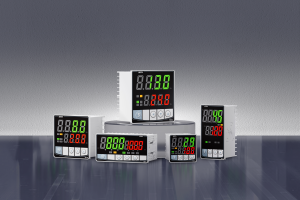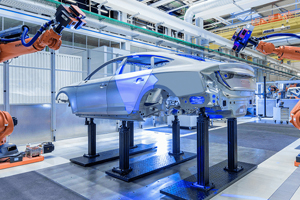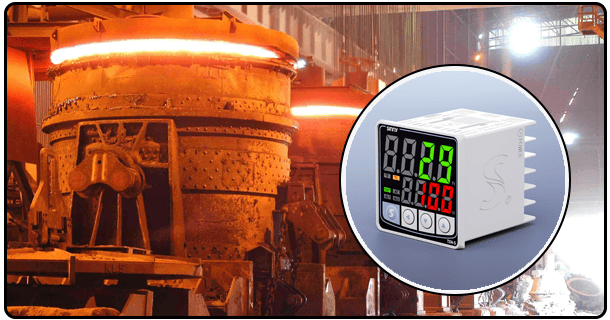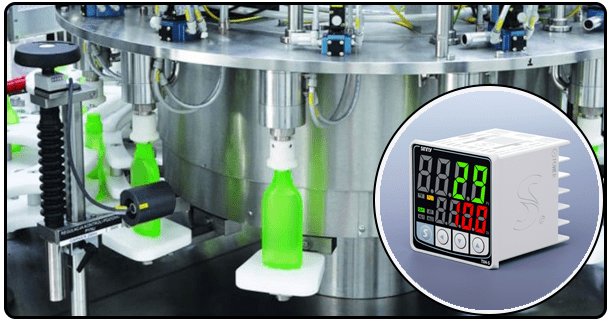PID SSR temperature controller: Advanced Precision Heating & Cooling Regulation
Learn about the efficiency and precision of PID SSR controllers. Discover their working principles, components, applications and benefits to achieve optimal temperature control for industrial, scientific and commercial settings.
1. What is PID SSR temperature controller?
PID SSR Temperature Controllers are sophisticated systems that regulate temperature precisely within an environment or process. It is composed of three main elements that work together: A PID Controller, a Solid State Relay, and a Temperature Sensor. PID controllers are the brain of the system. They calculate the corrective actions based on temperature deviations from desired setpoints. Temperature sensor is the "eye" of the system, providing feedback in real time regarding actual process temperatures. SSR is the "muscle" that executes the command to switch power on or off the cooling/heating element. The PID SSR Controller is distinguished by its integrated configuration from simple on/off thermometers. It allows for a much more precise and responsive temperature control.
2. What is the PID SSR temperature controller?
The functionality of a PID SSR temperature controller is predicated on the Proportional-Integral-Derivative (PID) control algorithm, a widely adopted method for maintaining system variables at a desired setpoint. The algorithm uses the temperature difference - between the setpoint and feedback temperatures - as a basis for generating an output signal which dictates SSR action. Three components make up the PID process.
Control proportional (P). The component produces an output signal directly proportional with the temperature error. The stronger the corrective action, the larger is an error. The proportional control is primarily concerned with the first phase of correction, but it may still leave residual errors if system response isn't perfectly linear.
Integral Control (I): This integral control adds an additional term of correction to the output signal. The integral component eliminates any steady-state errors that proportional controls alone may not be able to correct. This ensures that the temperature will eventually stabilize at its setpoint.
Control (D) Derivative: The component forecasts errors in the future based on changes to the temperature. This component generates a signal to counteract rapid temperature changes. It helps dampen oscillations and overshoot, improving stability and responsiveness.
PID Controllers calculate the combined contributions of P, I and D to determine the appropriate control signal. Calculating the control signal, the controller adds up the contributions of P, I and D. The SSR is modulated using this signal. SSRs are solid state electrical switches that control power to heating and cooling elements. The SSR can regulate energy output by adjusting its duty cycle, or the percentage of time it is "on". This will stabilize the temperature in the process around the setpoint.
3. Application of PID SSR temperature controllers
PID SSR controllers are versatile and precise, making them ideal for many applications in different sectors. They are able to respond to changing conditions and maintain temperature within tight tolerances.
Industrial processes: SSR PID controllers are essential in many industrial manufacturing processes. These controllers are used in ovens and heating furnaces. They also are found in drying chambers and polymer extrusion. Another key application is the control of reactors where temperature regulation is crucial for chemical reactions.
Lab Equipment: Accuracy is essential in scientific research and development. PID SSR Controllers are used in all laboratory incubators and incubators.
Processing and Storage of Food: From large food processing facilities to commercial kitchens, it is important that food be stored at a specific temperature for safety, preservation, and quality. PID SSR Controllers control the temperature of refrigerators and freezers as well as cooking appliances and drying ovens. They ensure compliance with regulations and extend product shelf-life.
Other Relevant Application: They are useful for a wide range of applications, including automotive (e.g. engine cooling systems and battery management), electronic manufacturing (e.g. soldering reflow process), space heating as well as many others.
4. The Benefits of PID and SSR Temperature Controls
VI. What to look for when choosing a PID/SSR temperature controller
To ensure the best performance, it is important to carefully consider several features.
Accuracy and Temperature Range: Make sure the controller can cover the temperature range required for your application. Verify the controller's accuracy as it determines its ability to maintain the temperature set point.
SSR Compatibility and Rating: SSRs must be rated appropriately for the voltage and the current they will be controlling. Compatibility with various types of loads is important (resistive or inductive), as well as potential problems like noise and voltage spikes.
Connectivity and Control Options: Evaluate the connectivity and control options available (e.g. analogue outputs/inputs, Modbus or RS485). Some controllers are programmable or integrate withShangWei Ji (supervisory computer).
Safety features and certifications: Search for safety features that are essential, such as alarms for overheating, switches for high/low limits, and housings with appropriate ratings (e.g. explosion-proof in hazardous environments). Verify that the controller is certified and meets industry standards.
Ease-of-Use and User Interface: An intuitive, clear display, simple menu navigation, and fewer options for configuration and monitoring reduce the risk of user error.
VII. Installing and maintaining PID SSR temperature controllers
Installation and maintenance is vital to ensure the efficient and reliable operation of PID SSR Temperature Controllers.
Installation Guidelines: Place the controller at a place that's dry, clean and easily accessible to operate and maintain. It must be mounted securely. The temperature sensor should be connected according to manufacturer instructions. Make sure that the sensor is placed correctly in the system to reflect accurately the desired temperature. Connect the SSR terminals with the cooling/heating element. Ensure that the wiring is correct and the load compatible. Verify that all electrical connections meet safety standards.
Check that all settings on the controller are configured correctly. Look for signs of excessive heat around the SSR.
Troubleshooting Typical Issues: Typical problems include incorrect temperature readings or failures to reach setpoints. Unexpected SSR cycling is also a common problem. The typical troubleshooting process involves checking the sensor calibration and connections, confirming setpoints and modes, inspecting power supplies and wiring, and reviewing diagnostic codes or information from controllers.
- Understanding PID temperature controller 12V : A detailed guide
- Outline: PID Temperature Controller Manual























